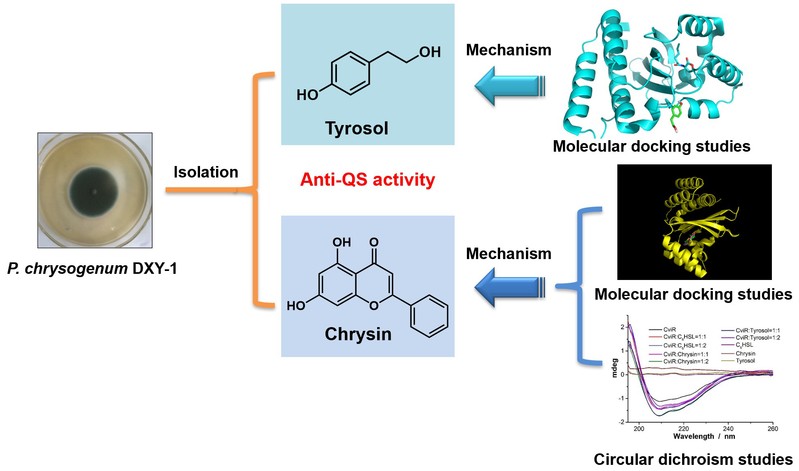With the wide application of antibiotic drugs globally, bacterial resistance or even multi-drug resistance has become a major problem of worldwide concern. Since the mechanism of antibiotics is to achieve the purpose of anti-infection by directly killing pathogenic bacteria or inhibiting the growth of bacteria, bacterial resistance can easily arise under this survival pressure. Therefore, it is urgent to find new targets to develop non-antibiotic antimicrobial agents to fundamentally solve the problem of bacterial resistance. Based on this, the bio-antimicrobial materials team led by Prof. Zhu Hu has designed and developed a series of targeted antimicrobial materials and cationic antimicrobial agents, systematically investigated their molecular mechanism and applicability, and achieved a series of innovative research results, which have important theoretical significance and application value in the treatment of drug-resistant bacterial infections and solving the problem of bacterial drug resistance.
The results have been published in Bioorganic Chemistry, one of the top SCI journals. The first author of the results is Lecturer Chang Aiping, PhD student Li Li, Postgraduate Li Jiaxin, Associate Professor Wang Xuejiao, Postgraduate Liu Yuting. The co-corresponding authors are Associate Professor Wang Yinglu, Professor Zhu Hu from Fujian Normal University, and Professor Lv Jianren from the University of Manchester, UK, with Fujian Normal University as the first signature unit.
Quorum sensing (QS) is a mechanism that regulates the survival and pathogenicity of bacteria, and is a new target for the development of antibacterial drugs. The papers entitled Exploring the quorum sensing Inhibition of isolated chrysin from Penicillium chrysogenum DXY-1 and Tyrosol from marine fungi, a novel quorum sensing inhibitor against Chromobacterium violaceum and Pseudomonas aeruginosa are based on the work of Quorum Sensing (QS). In this work, two small-molecule QS inhibitors (p-hydroxyphenethyl alcohol and salicin) were isolated from the marine fungus Penicillium chrysogenum DXY-1, targeting the bacterial quorum sensing (QS) system, and the molecular mechanism of their action was investigated. It was found that the small-molecule QS inhibitors could act on the DNA-binding region of the QS receptor protein CviR, change the conformation of CviR so that it could not bind to the corresponding DNA and did not initiate the expression of the relevant genes, thus inhibiting the production of pathogenic factors and the formation of the bioepithelium, and effectively reducing the pathogenicity. The resulting compounds can be used as potential antimicrobial drugs, which can help to deal with the increasingly serious problem of bacterial drug resistance.
Antimicrobial peptides (AMPs) not only have the advantages of being broad-spectrum and not easily inducing bacterial resistance, but also can improve their antibacterial activity through intermolecular interactions to form self-assemblies. Therefore, the development of efficient QS-targeted antimicrobial peptide molecules is one of the most important strategies to solve the problem of bacterial drug resistance. The research work entitled Antimicrobial peptides fight against Pseudomonas aeruginosa at a sub-inhibitory concentration via anti-QS pathway systematically investigated the potential of two antimicrobial peptides, G(IIKK)3I-NH2 (G3) and C8-G(IIKK)2I-NH2 (C8G2), to act as group-sensing inhibitors at sub-inhibitory concentrations against the opportunistic pathogen, Pseudomonas aeruginosa, and elucidated their mechanism of action. The results show that these peptides bind to LasR in a non-competitive manner, leading to changes in its secondary structure and further affecting the signaling of downstream genes, thereby inhibiting bacterial pathogenicity. This weakening of the pathogenicity of the causative bacteria greatly reduces the likelihood of drug resistance development, making these AMPs drug precursors for the development of novel peptide-drug conjugates for the treatment of drug-resistant Pseudomonas aeruginosa infections.
After the combination of cyclodextrin and cationic surfactants, finding a balance between bactericidal efficacy and skin mildness is crucial for expanding the application of cationic antibacterial agents in the treatment of drug-resistant bacterial infections. The research work, titled A win-win scenario for antibacterial activity and skin mildness of cationic surfactants based on the modulation of host-guest supramolecular conformation, selects representative commercial cationic antibacterial agents of different types. It systematically investigates the modulation mechanism of the supramolecular host-guest interactions of β-cyclodextrin (β-CD) on their self-assembly, antibacterial performance, and skin irritability. The study clearly delineates the structure-activity relationship among supramolecular conformation, antibacterial activity, and skin mildness. This provides data support and theoretical guidance for the development of new cationic antibacterial agents that simultaneously possess both skin mildness and effective antibacterial activity.
The series of achievements were supported by the Key Support Project of the National Natural Science Foundation of China's Cross-strait Cooperation Fund and the Youth Fund of the National Natural Science Foundation of China.
Paper link:
https://www.sciencedirect.com/science/article/abs/pii/S0045206821002716
https://www.sciencedirect.com/science/article/abs/pii/S004520681930820X
https://www.sciencedirect.com/science/article/pii/S0045206823005837
https://www.sciencedirect.com/science/article/abs/pii/S0045206823001086

(Translated by Cai Yuan/ Reviewed by Chen Fang)
